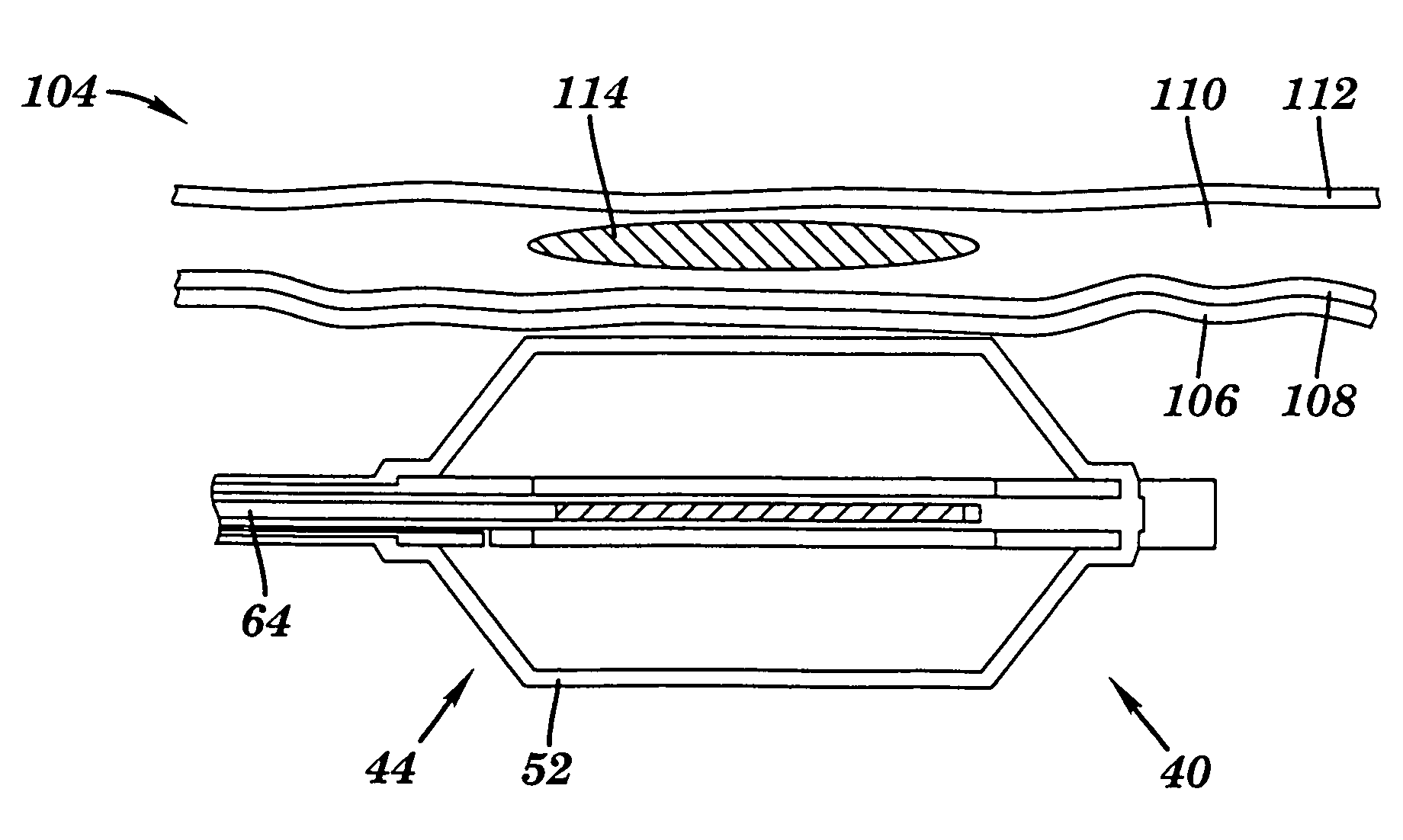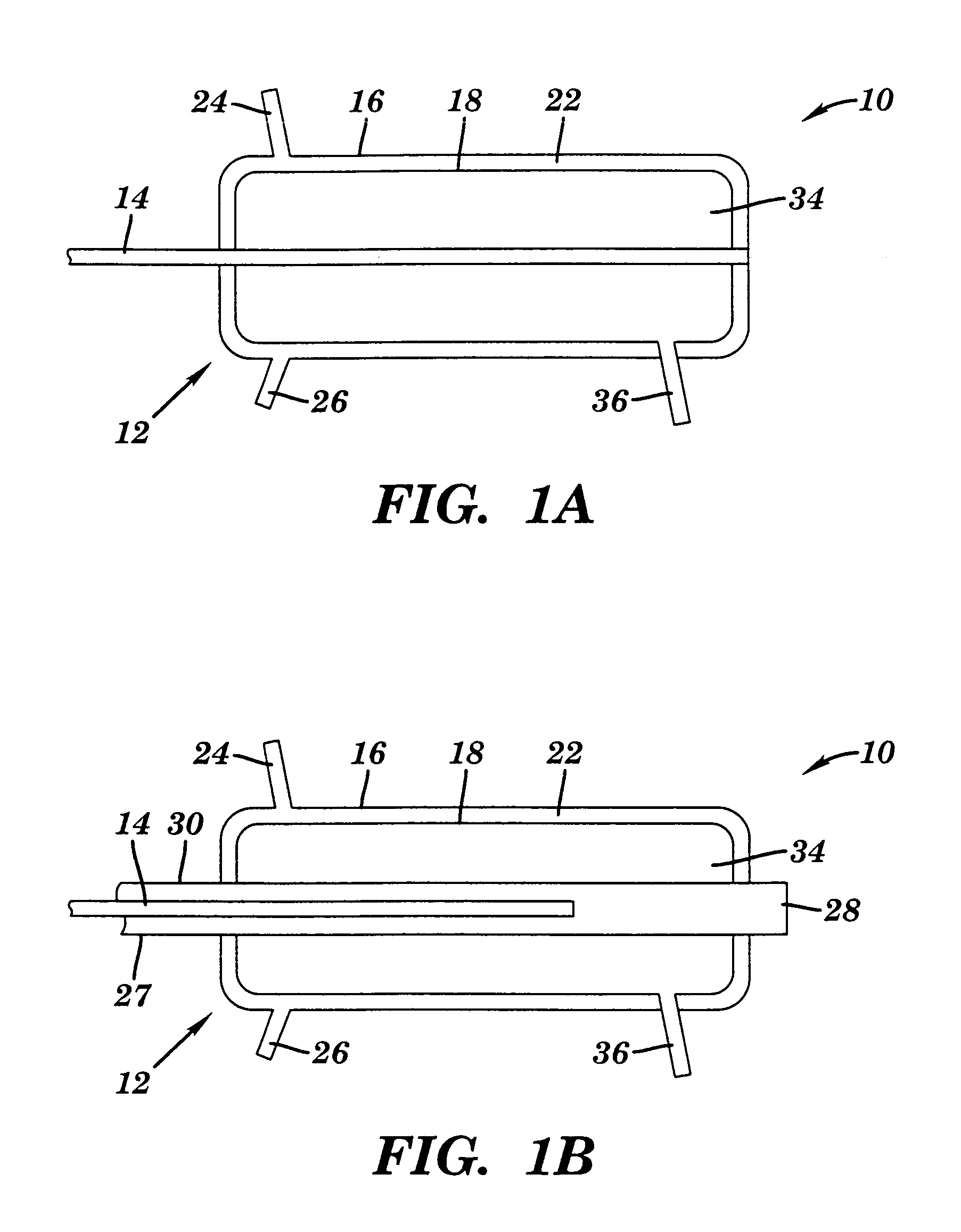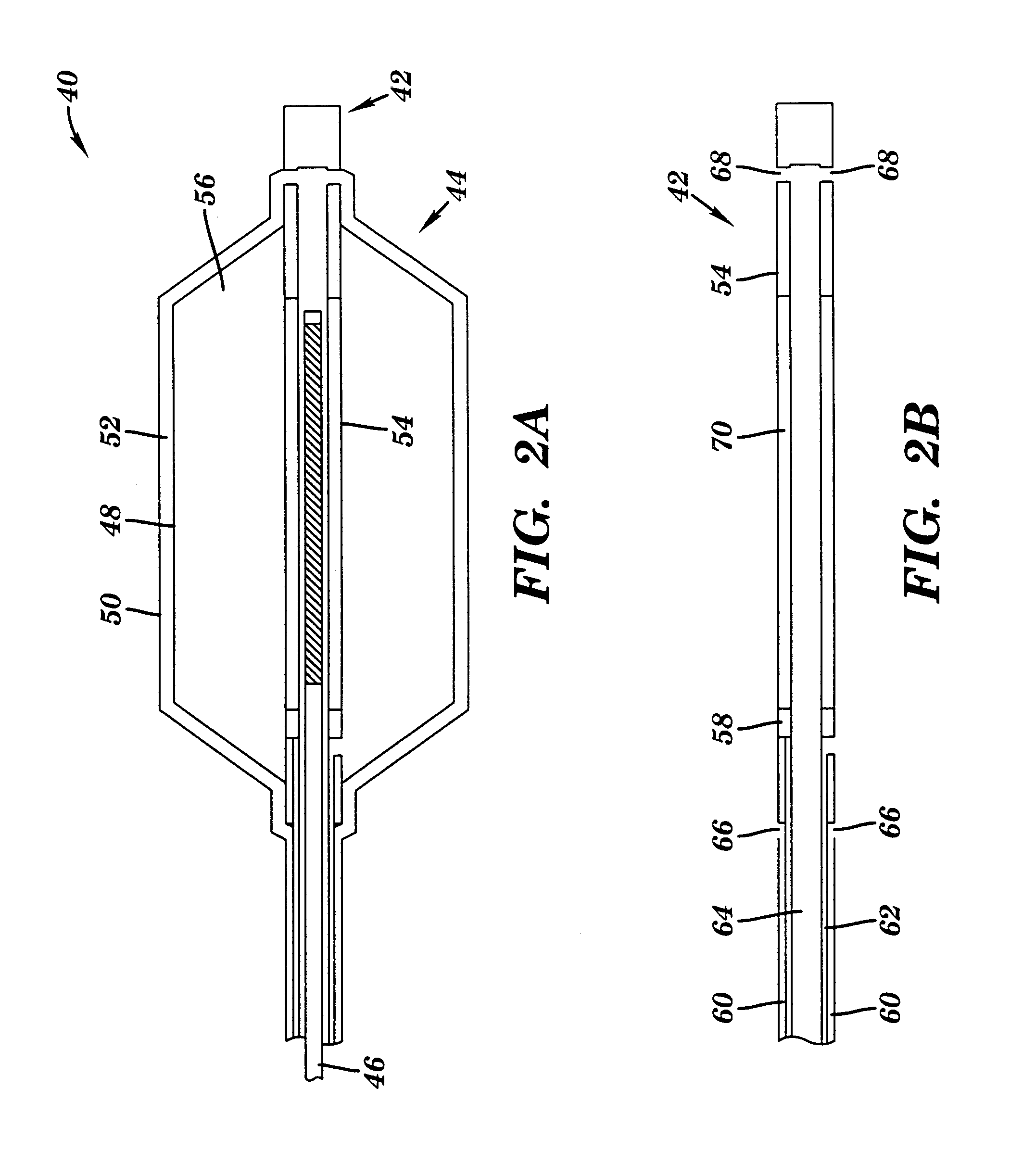Method for delivering energy to tissue and apparatus
- Summary
- Abstract
- Description
- Claims
- Application Information
AI Technical Summary
Benefits of technology
Problems solved by technology
Method used
Image
Examples
Embodiment Construction
[0022]The present invention relates to an apparatus that is useful for the treatment of GERD and other conditions. The apparatus includes an energy delivery component and an inflatable member disposed around the energy delivery component. For purposes of the present invention, the inflatable member is to be deemed “disposed around” the energy delivery component if at least about 50% (e.g., at least about 70%, at least about 80%, at least about 85%, at least about 90%, and / or at least about 95%) of the energy emitted by the energy delivery component passes through the inflatable member prior to exiting the apparatus. The inflatable member includes a flexible inner wall and a flexible outer wall. The inflatable member's inner wall and the inflatable member's outer wall enclose a cavity therebetween, and the cavity includes an inlet and an outlet.
[0023]The energy delivery component can itself be an energy source, or it can be coupled to an energy source which is external to the apparat...
PUM
 Login to View More
Login to View More Abstract
Description
Claims
Application Information
 Login to View More
Login to View More - R&D
- Intellectual Property
- Life Sciences
- Materials
- Tech Scout
- Unparalleled Data Quality
- Higher Quality Content
- 60% Fewer Hallucinations
Browse by: Latest US Patents, China's latest patents, Technical Efficacy Thesaurus, Application Domain, Technology Topic, Popular Technical Reports.
© 2025 PatSnap. All rights reserved.Legal|Privacy policy|Modern Slavery Act Transparency Statement|Sitemap|About US| Contact US: help@patsnap.com



